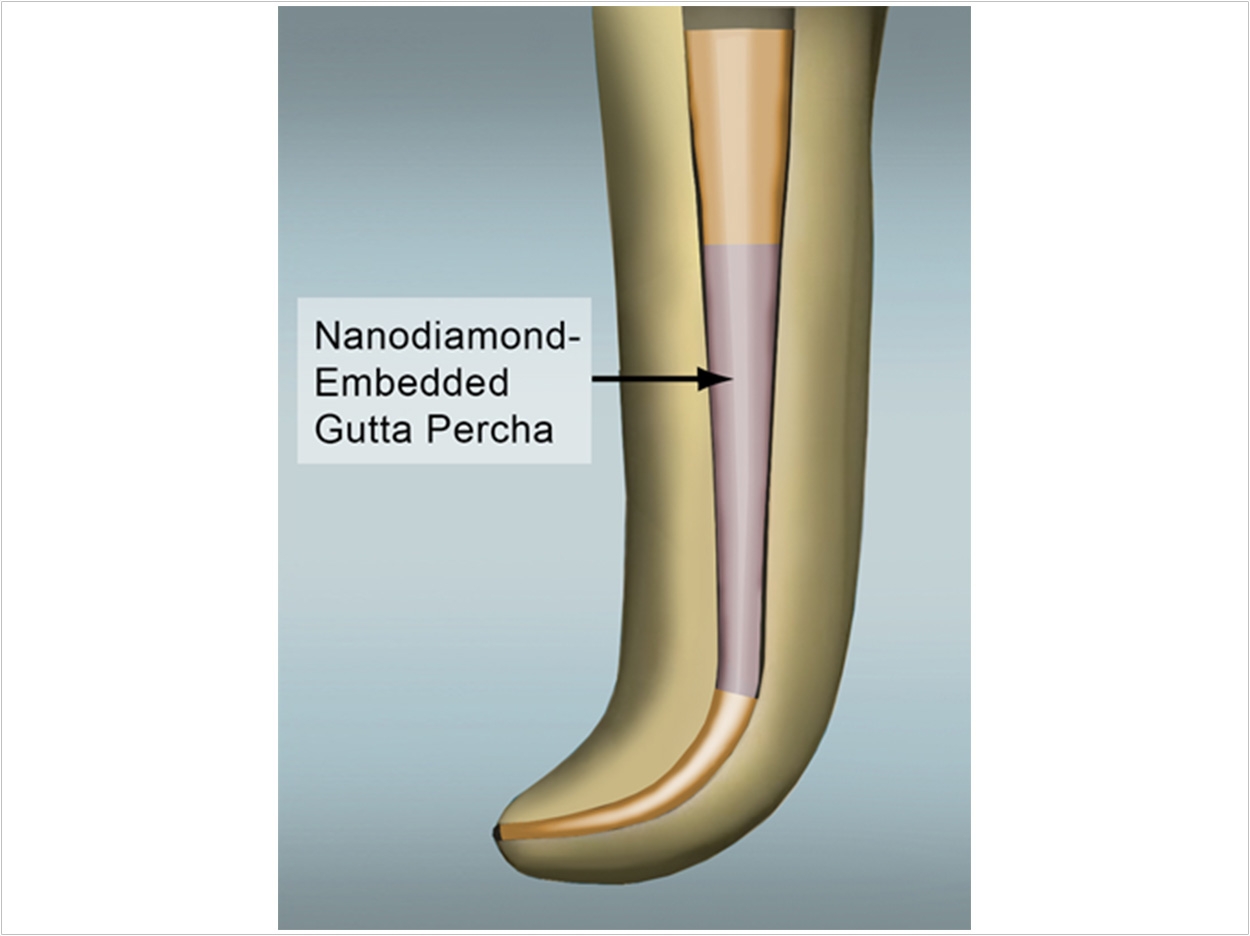
Nanodiamonds may be used to protect disinfected root canals after the nerve and pulp are removed, improving the chances of full recovery, according to research at the University of California Los Angeles (UCLA) School of Dentistry and the UCLA Henry Samueli School of Engineering and Applied Science.
These tiny carbon particles are so small, millions of them can fit on the head of a pin. They resemble soccer balls but have facets like larger diamonds, enabling them to deliver a wide range of drugs and imaging agents, according to the researchers. Combining nanodiamonds with gutta-percha may enhance gutta-percha’s protective properties.
“Harnessing the unique properties of nanodiamonds in the clinic may help scientists, doctors, and dentists overcome key challenges that confront several areas of healthcare, including improving lesion healing in oral health,” said Dean Ho, MS, PhD, professor of oral biology and medicine in the dental school and a co-corresponding author of the study.
Protecting disinfected root canals is a delicate process, the researchers note. Dentists use gutta-percha to block bacteria from infiltrating the tooth, but it can break during the procedure or create pockets of space for bacteria to infiltrate, which leads to infection.
The researchers tested nanodiamond-embedded gutta-percha (NDGP) in three people who were undergoing root canal procedures. Tests of the implanted material confirmed that the NGDP was more resistant to buckling and breaking than conventional gutta-percha. All three patients healed properly, without unusual pain and without infection. The use of NDGP did not require changes to any of the standard procedures for root canals.
“This trial confirms the immense promise of using nanodiamonds to overcome barriers for a range of procedures, from particularly challenging endodontics cases to orthopedics, tissue engineering, and others,” said co-corresponding author Mo Kang, MS, PhD, DDS, UCLA Dentistry’s Jack Weichman Professor of Endodontics.
Ho also has collaborated with oncologists, cancer biologists, mechanical engineers, materials scientists, chemists, and others over the past 10 years to explore how nanodiamonds could be used in oral health, cancer treatment, regenerative medicine, and antimicrobial applications, among other areas.
“We believe nanodiamonds could ultimately help us sidestep drug resistance in cancer, improve the efficiency of magnetic resonance imaging, and address other clinical challenges,” said Ho.
Related Articles
Nanodiamonds Improve Root Canal Therapy
Tiny Diamonds Improve Cleft Palate Treatment
Student Develops One-Shot Root Canal Alternative


